By Rowaida Abdelaziz
“Audrey Hepburn of Arabia. RIP Faten Hamama,” tweeted Youssef El Deeb, CEO of Picture Pond Media and founder of Fatafeat TV.
Faten Hamama, known as “the Lady of the Arabic Screen” and one of the greatest of Egypt’s film actresses died at the age of 83 last Saturday, drawing condolences from across the film industry. Her remarkable legacy as a national treasure also reminds us of the unmatchable glamour of old-school Arab Hollywood that continues to capture the hearts of people throughout the region today.
Known as the Hollywood of the Middle East, Egypt’s cinematic golden age took off after the introduction of sound in the early 1940s, producing hundreds of black and white films that are still cherished and enjoyed today.
The industry continued to skyrocket lasting throughout the 1940s until the 1960s. During this time period major historical events were occurring in Egypt including the overthrow of its monarchy, colonialism, the Second World War and the post-colonial age.
Nonetheless, Egypt’s cinematography still remained the largest of its industry in the region bringing together societal classes and international viewers as the third largest repertoire in the world, furthering a vital component of the Egyptian identity. These vintage photos take us back to to the golden era of Egyptian cinema for a much-needed dose of nostalgia:
1.
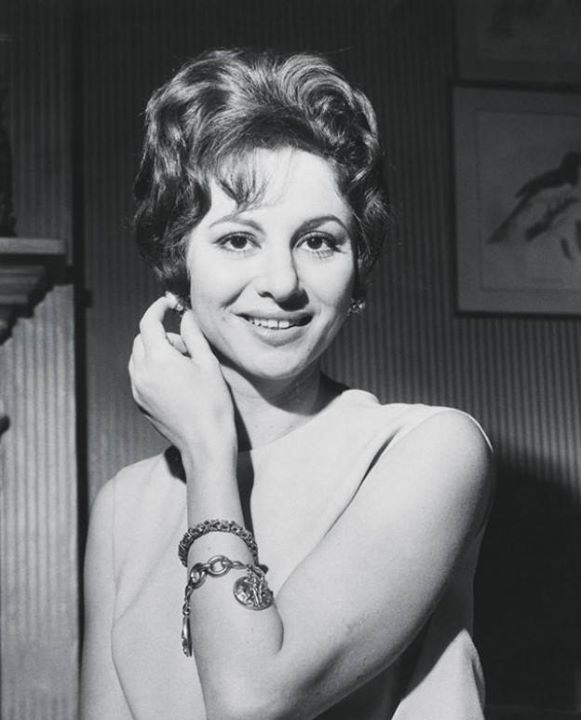
Known as the “Lady of the Screen,” Faten Hamama will certainly remembered as one of the greatest actresses of the golden age of Egyptian cinematography. She was the first female recipient of the Lifetime Achievement Award at the 2009 Dubai International Film Festival and was named the Star of Century by the Egyptian Organization of Critics and Writers in 2000. Besides being married to Omar al-Sharif until 1974, she appeared in almost 100 films working with some of the masters of Egypt’s film industry in both romantic films and powerful movies “advocating women’s rights and condemning social injustices.”
2.
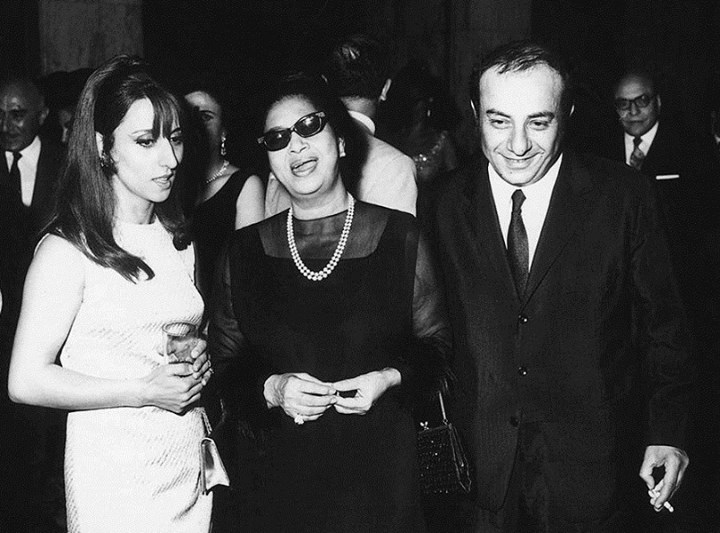
This one-of-a-kind photo includes three of the most glamorous legends of the time – From the left, Lebanese singer Fairouz, Egyptian legend Um Kalthum and Lebanese musician Assi Rahbani. Known as the “Star of the East,” Um Kalthum was an international singer for decades and played the main character Wedad in the self titled film which was the first production with sound by Studio Misr.
The music industry dominated Egyptian cinema during the 1940s with its generation of famous singer stars including Farid el Atrash, Abdel Halem Hafiz, Shadia and Sabah.
3.
Often referred to as el-
This powerful singer, actor and producer was particularly famous for his swoon-worthy romantic songs and powerful nationalist tunes. His music also extended beyond Egyptian borders to influence modern music in the West as well. Rapper Jay-Z even got into some trouble sampling Abdel Halim’s Khosara for his hit song ‘Big Pimpin.’
4.
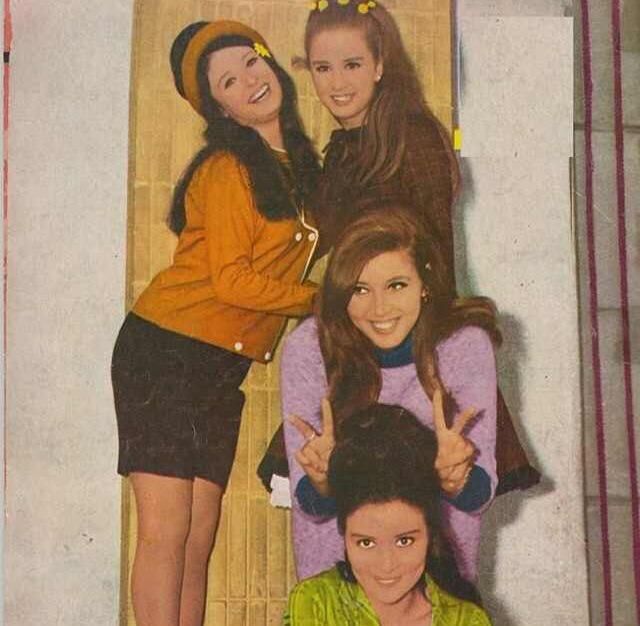
Women contributed greatly to the success of Egyptian cinema during the 1960s by breaking cultural stereotypes and bringing their personality across TV and movie screens throughout the region. This not only established their own careers as key names in Egyptian cinema, but also paved the path for modern day actresses as well. Pictured above are Egyptian actresses Naglaa Fathi, Nelly, Mervet Amin and Fatma Mazhar.
5.
Known as the “Marilyn Monroe of Arabia,” Hind Rostom was one of the most stunning icons of the golden era, whose powerful stage presence “broke the stereotypical gender role of the weak and meek female ladies” in Egypt. She went on to win Best Actress by the Association of Egyptian Cinema Writers and Critics in 1975 for her lead role in the film ‘el Gaban wal houb’ (The Coward and love.)
6.
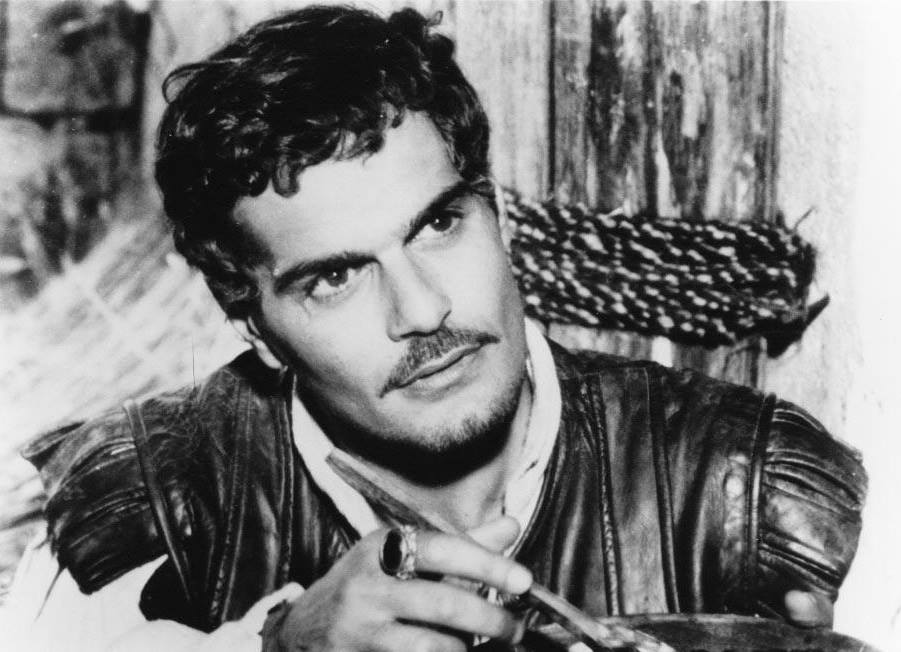
Popularly known as Omar al-Sharif, this handsome Franco-Arabic actor is best known for playing Sherif Ali in Lawrence of Arabia in 1962 for he won an Academy Award nomination for Best Supporting Actor. Born a Roman Catholic named Michel Demitri, al-Sharif converted to Islam and took on the new name before marrying actress Faten Hamama.
7.
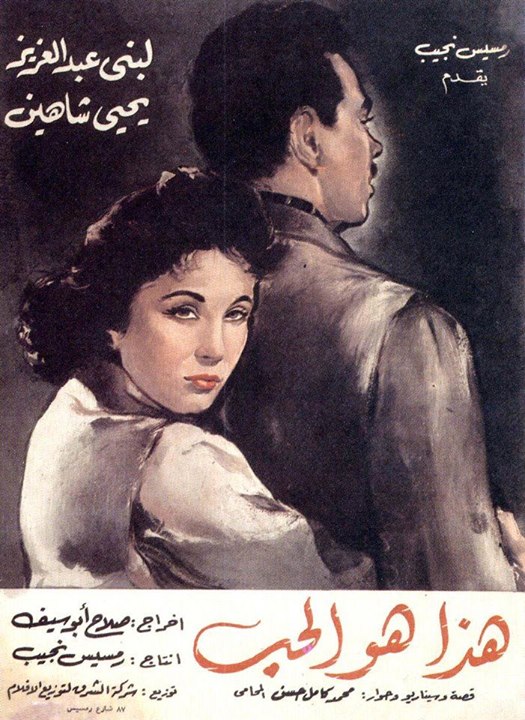
The movie poster for “This Is Love,” a movie produced in 1958 featuring Lobna Abdel-Aziz and Yehia Shaheen, is among many vintage movie posters that would hang in the streets of Egypt.
8.
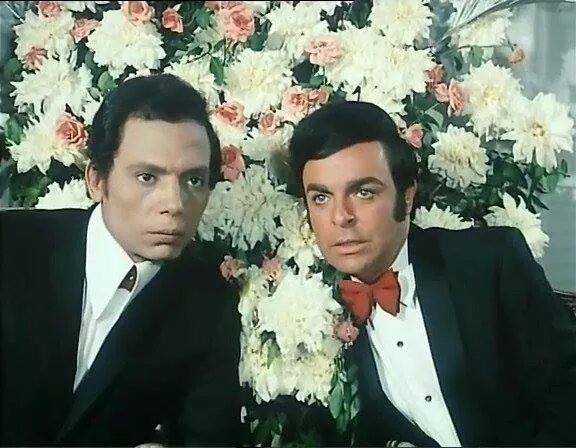
Adel Imam and Samir Sabry were both popular individual actors but even more so as a pair as seen in the movie ‘The Search for a Scandal’. Outside of acting, both stars were heavily involved in work outside of Egypt. In 2000, Imam was named an UNHCR Goodwill Ambassador where his work focused on raising public awareness about refugees in Arabic-speaking countries. Sabri ,a graduate of Oxford University, was named the Ambassador of Alexandria for his fluency in multiple languages.
9.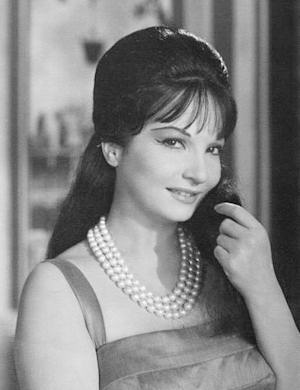 Born as Fatima Ahmed Shaker, Shadia quickly came into the spotlight by combing both her acting and musical talents singing among the most popular singers such as Abdel Halim Hafez. She performed in over 100 films ranging from seductive romances to serious melodramatic tragedies.
Born as Fatima Ahmed Shaker, Shadia quickly came into the spotlight by combing both her acting and musical talents singing among the most popular singers such as Abdel Halim Hafez. She performed in over 100 films ranging from seductive romances to serious melodramatic tragedies.
10.
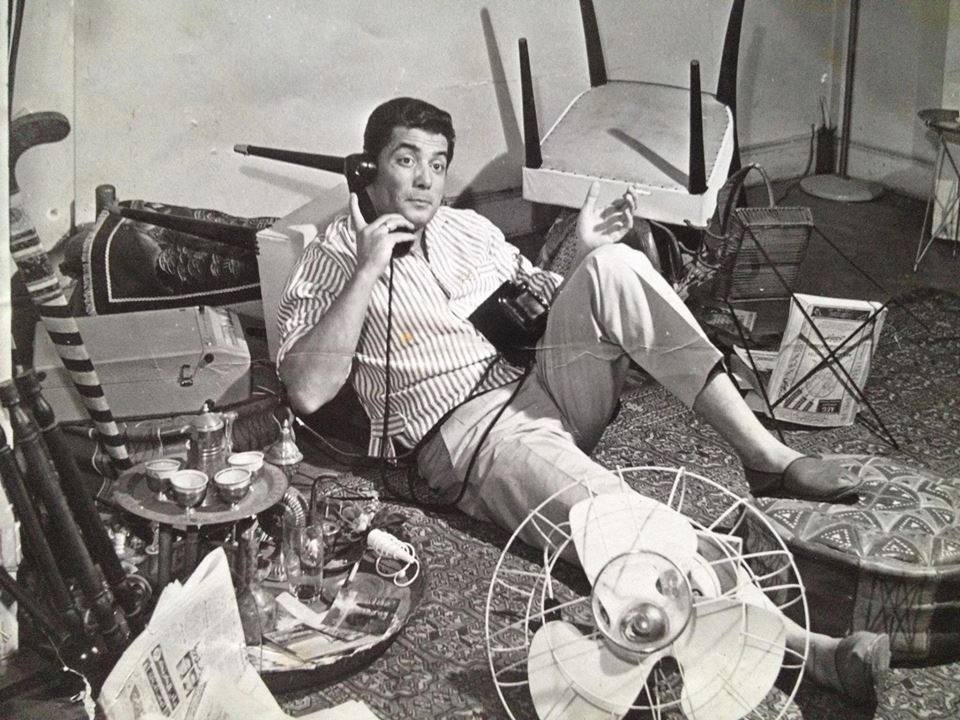
Nominated as the best actor of the century in Egypt, Shoukri Sharhan was featured in some of the top Egyptian films during the height of Egypt’s golden cinematic age. Even President Gamal Abdel Nasser honored Sharhan as “Egypt’s decoration,” a title never given to anyone prior.
11.
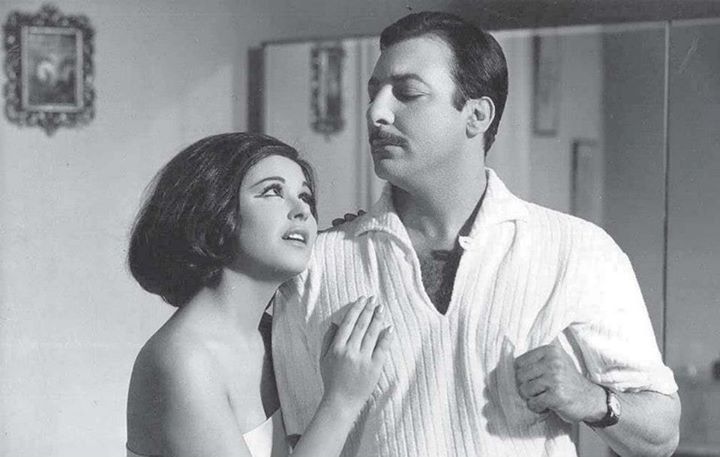
Said to be the second choice for Lawrence of Arabia, Rushdi Abaza reached the peak of his career in taking on main roles for political films during the golden era. Although it took him some time to break into the movie, by 1960 he was the most wanted actor in Egypt starring in eleven films in the year 1960 alone.
12.
Actress and singer, Sabah was also among the well-known beauty queens in Egyptian cinema. Originally from Lebanon, Sabah resided in Egypt for most of her life and appeared in several movies with Egyptian heartthrob, Ahmed Ramzy.
13.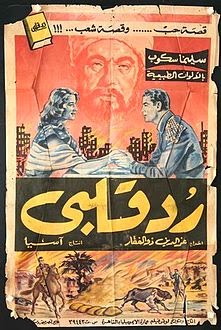
Egyptians are very proud of their culture and that was reflected in the films of the golden era. The film 1957 Rodda Qalbi or Back Alive featuring Shukri Sarhan is a tribute to the 1952 revolution in Egypt and is still shown today every July 23 commemoration of Egypt’s National day.
14.
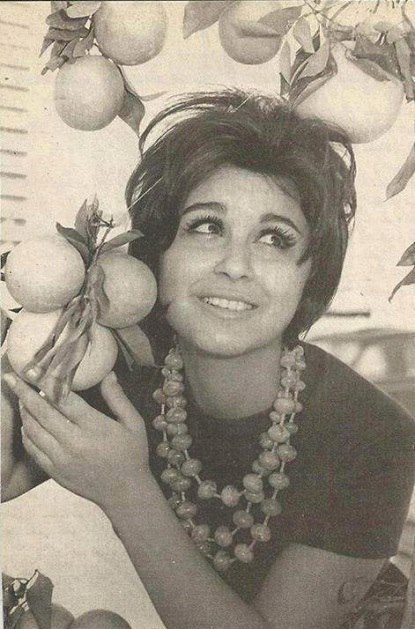
Known as the Cinderella of Egyptian cinema, Soad Hosni began her career singing the for a popular children’s’ radio program. Her major breakthrough came in the late 1940s with her debut of “Hassan & Naima,” the Arabic version of Romeo and Juliet.
15.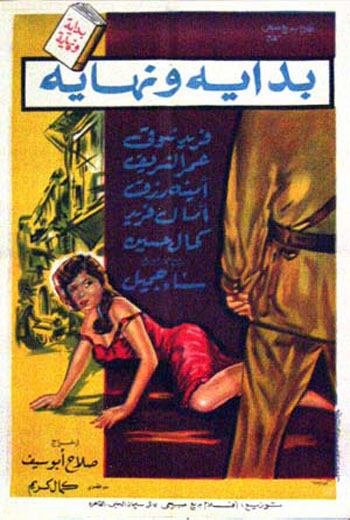
One of the most classical and critical acclaimed films of the golden era is the 1960 movie, Bidaya wa Nihya ‘A beginning and an end.” Based on the novel by Nobel Prize winner Naguib Mahfouz, the film was nominated for the Grand Pix Award at the 2nd Moscow International Film Festive.
16.
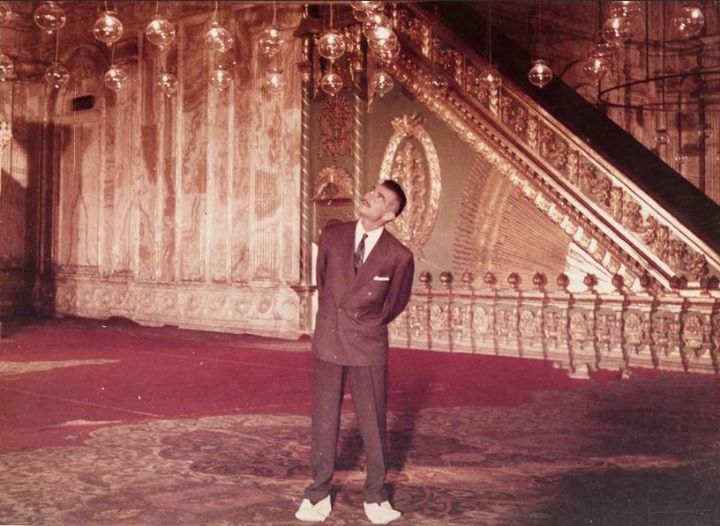
Known as the Knight of Egyptian cinema, Ahmed Mazhar starred in multiple films that are still fondly remembered and beloved today including Al-Aidi El-Naemah or Soft hands, which received an award of recognition from the Academy of Motion Picture Arts and Sciences and entered into the 10th Berlin International Film Festival in 1964. One of the most memorable scenes from the film took place in the beautiful Muhammad Ali Mosque in Cairo.
17.
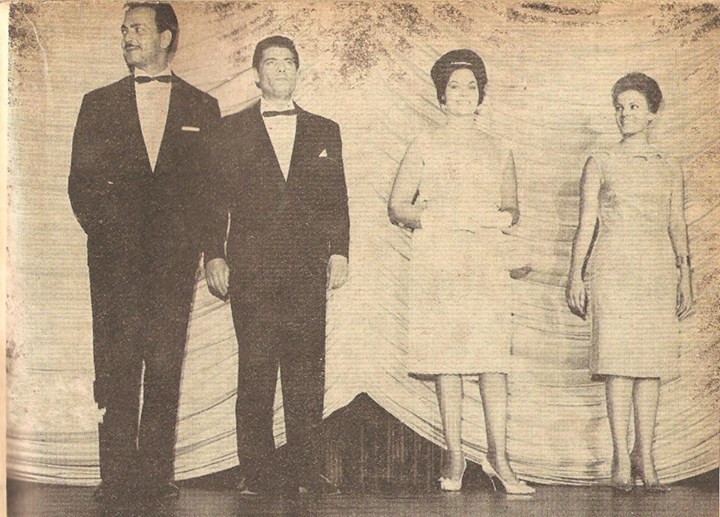
Actresses Nadia Lutfi and Medha Yosri were accompanied by Shukri Sarhan and Kamal al-Shanwi at the Berlin Film Festival in 1962. The festival was one of the many that hosted a number of successful Egyptian films during its golden era.

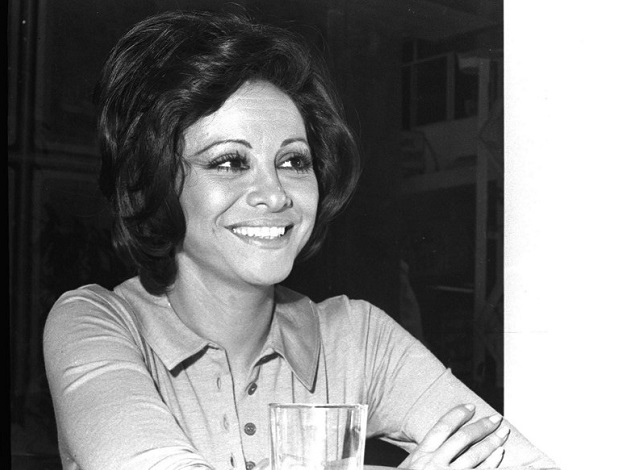


















this was the greates memory for me and all i have loved thnks a lot